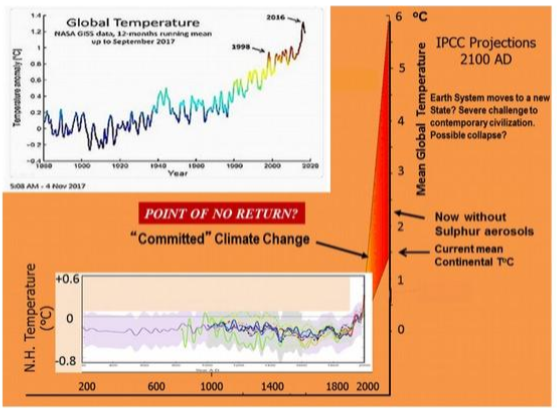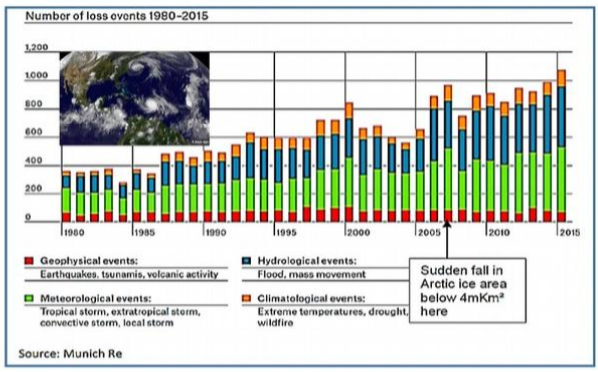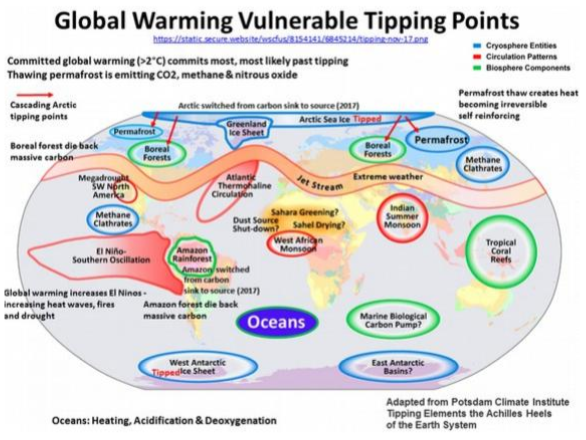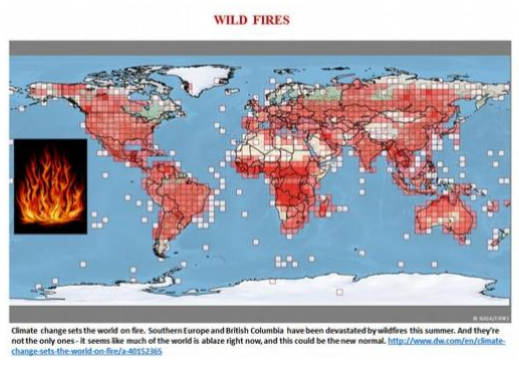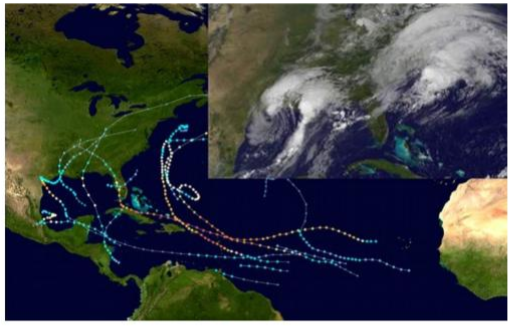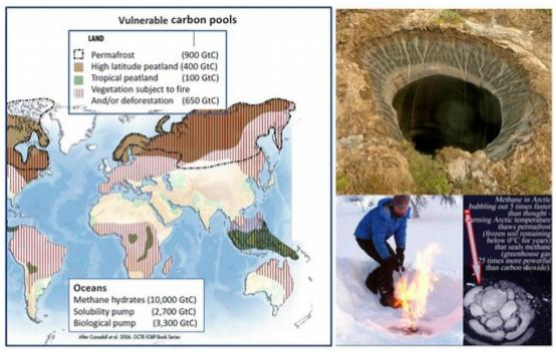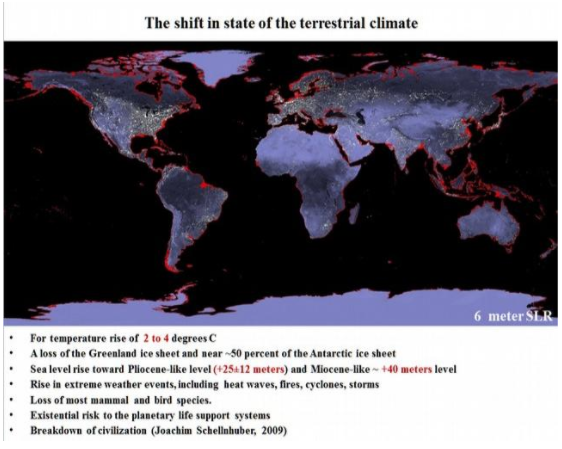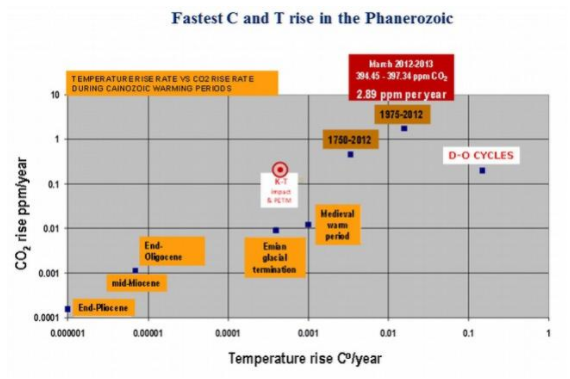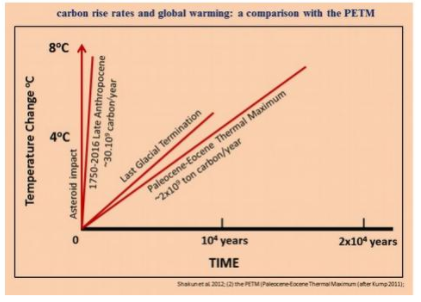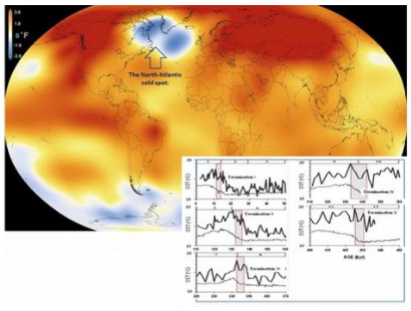Extreme Weather Events: There Is No Planet B
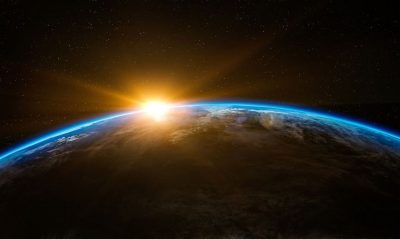
The current warming of Earth (Figure 1), manifest in the rise in extreme weather events (Figures 2 and 3), including collapse of polar ice sheets, melting of the Arctic Sea ice, penetration of snow storms into mid-latitudes, permafrost thaw and methane release, hurricanes and wildfires (Figure 4), manifests a shift in state of the atmosphere-ocean system, constituting an existential threat to humanity and much of nature.
As extreme temperatures, the rate of sea ice melting, the collapse of Greenland glaciers, the thawing of Siberian and Canadian permafrost and increased evaporation in the Arcticdrive cold snow storms into Europe and North America, and as hurricanes, cyclones, heat waves and wild fires (Figure 4) affect tropical and semitropical parts of the globe, itis becoming clear Earth is entering a shift in state of the atmosphere-ocean system associated with destructive climate tipping points including hurricanes such as in the Caribbean, SE USA and the SW Pacific (Figure 5). With hundreds of Gigaton carbon stored in Arctic permafrost, its thawing and methane release by analogy with geological methane-release and mass extinction events is becoming more likely (Figure 6).
Figure 2. The frequency of extreme weather events between 1980 and 2015 (Munich Re- insurance)
Figure 3. Global warming vulnerable tipping points
Figure 4. Climate change sets the world on fire. Southern Europe and British Columbia have been devastated by wildfires this summer.
Figure 5. The 2017 hurricane season in the Caribbean and Southeast USA
Figure 6 (A). A crater on the Yamal Peninsula in Siberia. (source); (B) Vulnerable carbon sinks. ( a ) Land: Permafrost – 600 GtC; High-latitude peatlands – 400 GtC; tropical peatlands – 100 GtC; vegetation subject to fire and/or deforestation – 650 GtC; ( b ) Oceans: Methane hydrates – 10,000 GtC; Solubility pump – 2700 GtC; Biological pump – 3300 GtC
It is reported that climate change will lead to the death of some 500,000 people a year due to food supplies by 20501 and hundreds of thousands of people due to extreme weather events.2
Developments in the atmosphere/ocean system reported by major climate research organizations (including NASA, NOAA, NSIDC, Hadley-Met, Tyndall, Potsdam, the World’s academies of science), and in Australia the CSIRO and BOM, include:
- A rise of atmospheric CO2 level to 408.35 ppm (February, 2018) at a rate of about 2 ppm/year and in previous years 3 ppm/year [4], rates unprecedented in the geological record since 56 million years ago [5], tracking across the stability threshold of the Antarctic ice sheet estimated variously at 450±50 ppm CO2 [6].
- The rise in greenhouse gas levels in the atmosphere and oceans is leading to an increase in extreme weather events relative to 1950-1960 (Figure 2) [7], including tropical storms, such as those in the Caribbean islands and SE USA (Figure 5), Tonga, Fiji, Vanuatu and the Philippines, with lives lost and damages estimated in the $billions [8].
- In Australia the frequency of extreme weather events has been rising, where since 2001, the number of extreme heat records has outnumbered extreme cool records by almost 3 to 1 for daytime maximum temperatures, and almost 5 to 1 and more for night-time minimum temperatures [9].
- Impacts on a similar scale are taking place in the ocean, where the CO2 rise is causing an increase in acidity from pH 8.2 to 8.1, predicted to decrease further to7.8 by 2100, affecting coral reefs and the marine food chain [10].
- Ice sheets melt rates and sea level rise have been increasing [11] and the rate of sea level rise has been accelerating, from ~1.7 mm/year over the last century to ~3.2 mm/year between 1993 and 2010 [12] and to 3.9 mm/year [13] (Figure 7A), threatening low-lying islands, delta and lower river valleys, where billions of people live, compounded by changes to river flow regimes (Figure 7B).
The current rates of greenhouse gas level rise and temperature rise exceed those observed in the geological record (Figures 8 and 9).
Global warming, amplified by feedbacks from polar ice melt, methane release from permafrost, and extensive fires, may become irreversible, including a possible collapse of the Atlantic Meridional Overturning Circulation [14] (Figure 10).
According to Professor James Hansen, NASA’s former chief climate scientist “Burning all fossil fuels would create a different planet than the one that humanity knows. “ [15] According to Professor Joachim Schellnhuber, Germany’s chief climate scientist “We’re simply talking about the very life support system of this planet” [16].
While the Paris Accord remains non-binding, governments world-wide are presiding over a large-scale demise of the planetary ecosystems, which threatens to leave large parts of the Earth uninhabitable [15, 16].
Tackling the root causes of an unfolding climate tragedy requires a wide range of methods, the main ones being (1) sharp reduction in carbon emissions, and (2) effort at draw-down of atmospheric CO2, using methods such as sea weed plantations, soil biochar, soil re-silicification (applying basaltic rock dust), air-streaming through basalt and serpentine, sodium hydroxide pipe systems and so on.
There is no Planet B.
Figure 7(A) Sea level rise
Figure 7(B). Sea level rise
Figure 8. The fastest temperature rise rate in over the last 65 million years
Figure 9. Current warming compared to geological temperature rise rates
Figure 10. The likelihood of intermittent freeze events (stadial)
*
Dr Andrew Glikson, Earth and Paleo-climate science, Australia National University (ANU) School of Anthropology and Archaeology, ANU Planetary Science Institute, ANU Climate Change Institute, Honorary Associate Professor, Geothermal Energy Centre of Excellence, University of Queensland.
Notes
[1] http://climate.nasa.gov/news/2432/2016-had–hottest–march-on-record/
[2] http://data.giss.nasa.gov/gistemp/graphs/http://www.nasa.gov/feature/goddard/2016/climatetrends–continue–to–break–records
[3] http://www.esrl.noaa.gov/gmd/ccgg/trends/global.html
[4] http://www.esrl.noaa.gov/gmd/ccgg/trends/
[5] http://onlinelibrary.wiley.com/doi/10.1111/gcb.13342/abstract
[6] https://arxiv.org/ftp/arxiv/papers/0804/0804.1126.pdf
[7] http://www.nasa.gov/centers/langley/science/climate_assessment_2012.html
[8] http://www.worldbank.org/en/news/press–release/2013/11/18/damages–extreme–weather–mountclimate–warms ; http://www.ncdc.noaa.gov/billions/time–series
[9] http://www.csiro.au/en/Research/OandA/Areas/Assessing-our–climate/State–of–the–Climate/2014-SoC–Report ; https://theconversation.com/sure–winter–felt–chilly–but–australia–is–setting–new–heatrecords–at–12-times–the–rate–of–cold-ones–35607
[10] http://www.gbrmpa.gov.au/managing–the–reef/threats–to–the–reef/climate–change/how–climatechange–can-affect–the–reef/ocean-acidification
[11] http://onlinelibrary.wiley.com/doi/10.1002/2014GL061052/abstract
[12] https://www.environment.gov.au/climate–change/climate–science/climate–change–future/sea–level
[13] http://climate.nasa.gov/vital–signs/sea–level/
[14] http://www.nature.com/nclimate/journal/v5/n5/full/nclimate2554.html
[15] http://www.atmos–chem–phys.net/16/3761/2016/acp-16–3761-2016.html
[16] http://www.reuters.com/article/us–climate–science–idUSTRE58R3UI20090928
[17] http://www.abc.net.au/news/2016-05–18/what–are–our–leaders–really–thinking-about–climatechange/
All images in this article are from the author unless otherwise stated.


